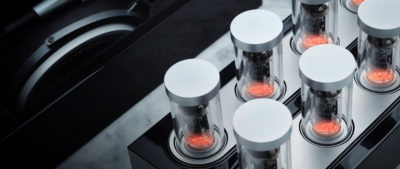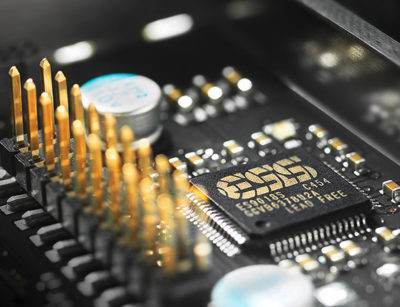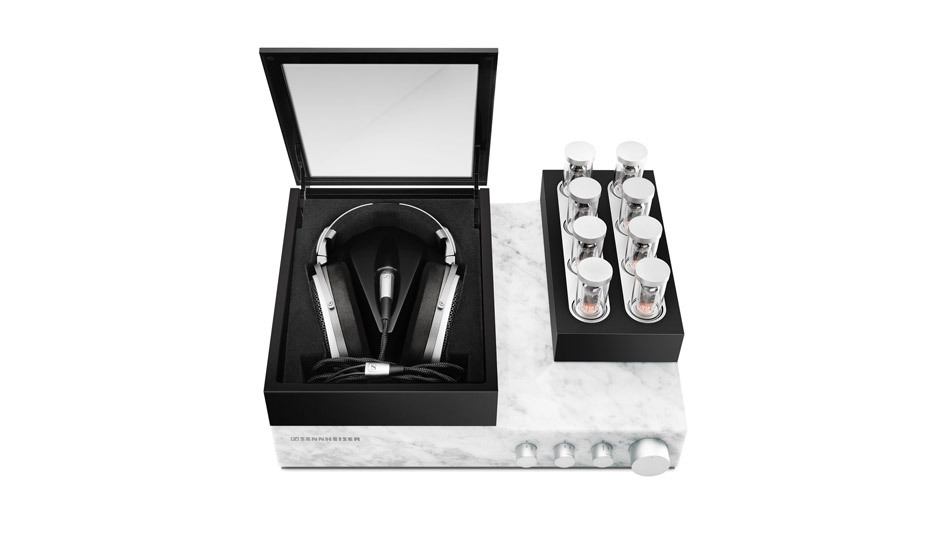$60,000 Headphones? What Aural Opulence Means to Everyday Audio
I’ve found a magic way to make people raise their eyebrows: tell them that you just listened to a pair of headphones that cost $60,000.
I noticed that response again and again after informing people that I’d just heard Orpheus. If that name sounds familiar to you, then you know that Sennheiser launched the first addition of these meticulously engineered – and massively expensive – audiophile headphones in 1991. Now the company is celebrating 70th anniversary with a second edition of HE 1 (Orpheus), a reference headphone that they feel represents “an unprecedented audio experience.”
So has Sennheiser really bettered its best with the new Orpheus, and met their goal of creating the best headphones that the world has yet seen – or heard, for that matter?
Very Serious Specs
You’ll need a thesaurus to see if Sennheiser has forgotten any superlatives in the English language when describing their new flagship headphone system, so perhaps it’s better to let the technology speak for itself. Here are some of the technical facts of Orpheus, which will be available in Q3 of this year:
- a frequency response that extends beyond the range of human hearing (8 Hz to over 100 kHz)
- the lowest total harmonic distortion that has ever been measured in an audio reproduction system
- a completely new amplifier concept that combines the impulse processing of a tube amplifier with the low distortion of a transistor amplifier
- eight vacuum tubes that process the incoming signal
- an amplifier housing crafted from granular, inhomogeneous Carrara marble that is freely suspended with the amplifier. The decoupling of the tubes in combination with the damping properties of the marble has the effect of reducing structure-borne noise to an absolute minimum.
- a tube amplifier stage that’s followed by a patented ultra-high impulse amplifier stage, which is directly integrated into the cups of the headphones, resulting in a 200% rise in efficiency
- Cool Class A classification: In the low-frequency range, Cool Class A provides Class A power at any volume. In the high- and ultrahigh-frequency range, the amplifier switches from Class A to the Class AB operation (only when listening to a very unusual frequency spectrum)
- Constructed of over 6,000 individual components, including gold-vaporised ceramic electrodes and platinum-vaporised diaphragms
Need more tech talk to be convinced? There’s all that and more on the Sennheiser Website – I’ll let them tell it to you straight.
What You Get is What You Hear
Once my friends’ eyebrows leveled out, there were some standard queries the followed, with the most popular being: “Who would pay $60,000 for a pair of headphones?”
You and I may not hang out with those types of buyers very much, but apparently Sennheiser knows how to locate them.. Already around 100 customers are interested in buying a HE 1 when the first systems are produced. What will these privileged buyers get for their debit, which after-tax will take them more than halfway to six figures? Well, when Sennheiser hosted some private listening sessions at a luxury hotel in Chelsea, I was lucky enough to be invited and find out for myself.

The amplifier’s marble housing prevents structure-borne noise.
Of course before you listen to the HE 1, you see them, and it’s an expensive sight. Before you is a solid block of marble, with four very luxurious-looking controls in front and eight pristine vacuum tubes glowing patiently on top right. On the left are the headphones themselves, ensconced in a form-fitting box.
On first look, the earpieces appear far too large for their purpose, but slip the leather cushions on and your ears make gentle contact with the hypoallergenic, breathable microfiber fabric below and everything fits just fine. I didn’t know yet if these would be the best-sounding headphones I ever encountered, but they were without a doubt the most comfortable.
My first audition track was an SACD of the Eagles classic “Hotel California.” As the song’s first flanges wafted up like steam into my pinna, it was clear that the HE 1 was going to deliver me into something different. The stereo placement and detail were especially apparent in Don Henley’s drums: not only was I hearing much of the music for the first time, but I could actually sense how it was recorded, and literally feel the musicians performing – and not just hear the sound of their efforts.
The surprises continued, not only in the sounds but in the space between them, as I heard additional tracks. In Miles Davis’ “Kind of Blue,” I began to feel that the music was actually in my brain, and not just funnelling into my cochlea. Every nuance of each instrument – the horn, the bass, the piano, the drums and that delicious ride cymbal – was there.
When your sonic reproduction system is this good, you are truly taken inside. You don’t just feel the drummer. You ARE the drummer.
Here’s Why
Designing a flagship product for consumers is nothing new, but it’s become an arguably rarer endeavour in the audio space, where companies must be understandably conservative in their financial outlays, and focus their funds on real-world products accessible to the many.
“People aren’t usually looking for a $60,000 headphone,” acknowledges Uwe Greunke, Head of Global Marketing for Sennheiser. “But the interest in the HE 1 was astonishing high.” Mankind supports this idea: Like going to the moon, or a new Ferrari, it’s a human thing to want to push the boundaries.”

Music data in the HE 1 is converted to analogue signals using the eight internal DACs of the ESS SABRE ES9018 processor.
The HE 1 is part of an initiative that Sennheiser calls “Shape the Future of Audio,” as the company looks to bring new sound experiences to life for consumers and audio professionals. The knowledge they’ve gained from these big pushes, which can eat up significant resources of money and time, don’t just show up on the high end however.
Digging in to make an advanced, 3D audio VR microphone is another aspect of this program, one that is especially attractive for companies such as GoPro, for example. “GoPro users create a lot of breathtaking content, and great 3D audio added to GroPro 360° video will be the ultimate experience,” Greunke says. “Content creators today need compact solutions that are fast to set up and easy to use while still delivering great audio. Solutions for the “lone wolf”, so to speak, for users who capture everything on their own.”
Headphones are an ideal way to quickly demonstrate audio breakthroughs. While microphones and monitoring systems are equally important, headphones eliminate a lot of the variables that can make it difficult to judge if the mission has been accomplished. “Headphones are so proximate, and the harmonic distortion is so low, that you have a 100% distortion-free environment,” notes Greunke. “That’s why people can hear right away that the HE 1 is something different, which opens up new possibilities of listening.
“But like a bottle of wine, which you can buy for $5 or $500, it’s not surprising to hear people ask, ‘What’s the difference?’” he continues. “It reminds me of a superb German red wine called Spätburgunder, Alte Reben by Bernhard Huber that, once you let it breathe, you can really taste and feel everything that has gone into it: The soil, the flowers, the hills. The HE 1 represents the same difference: It’s a new experience you can open up the mind with, and people love new experiences.”
— David Weiss
Please note: When you buy products through links on this page, we may earn an affiliate commission.








trajan2448
May 19, 2016 at 6:43 pm (9 years ago)Still ridiculous. But hey there are numerically more idle Uber rich than ever.